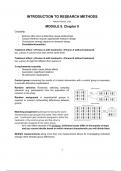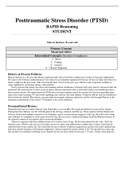Samenvatting
Summary Basics of Social Research - Introduction to Research Methods Endterm (840090-B-6)
- Instelling
- University College Tilburg (uct)
Summary Basics of Social Research - Introduction to Research Methods (-B-6), Tilburg University, Endterm part
[Meer zien]






